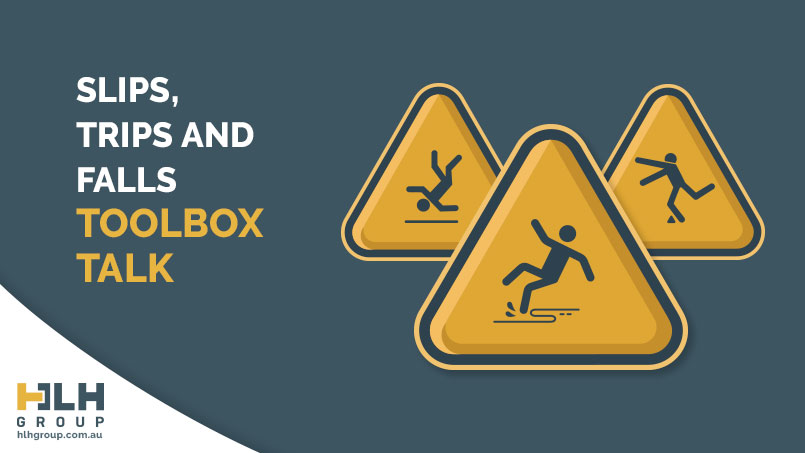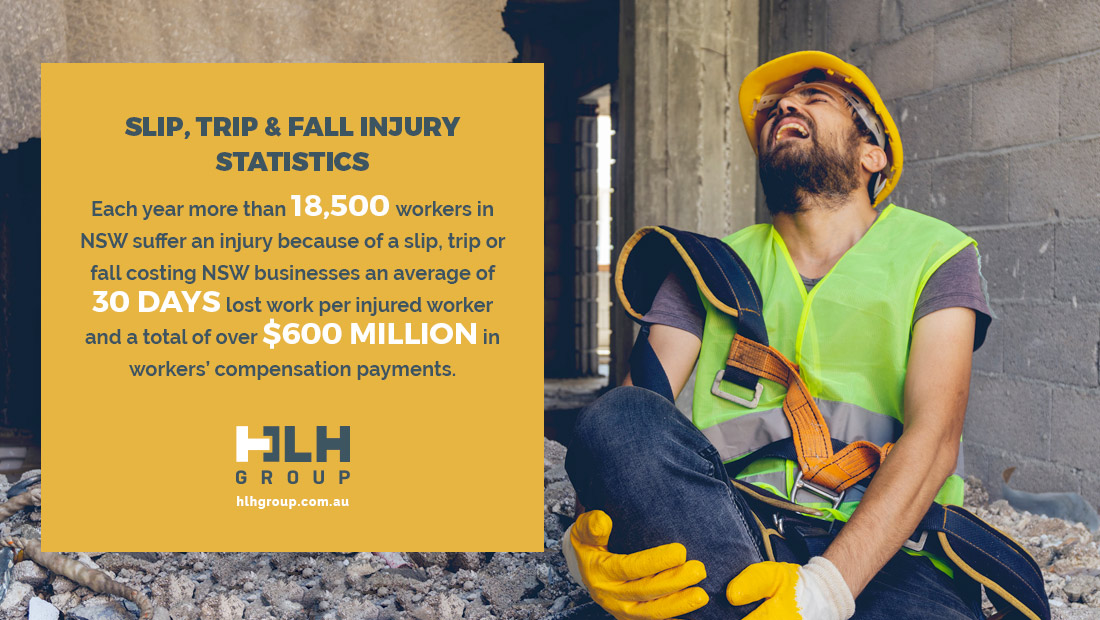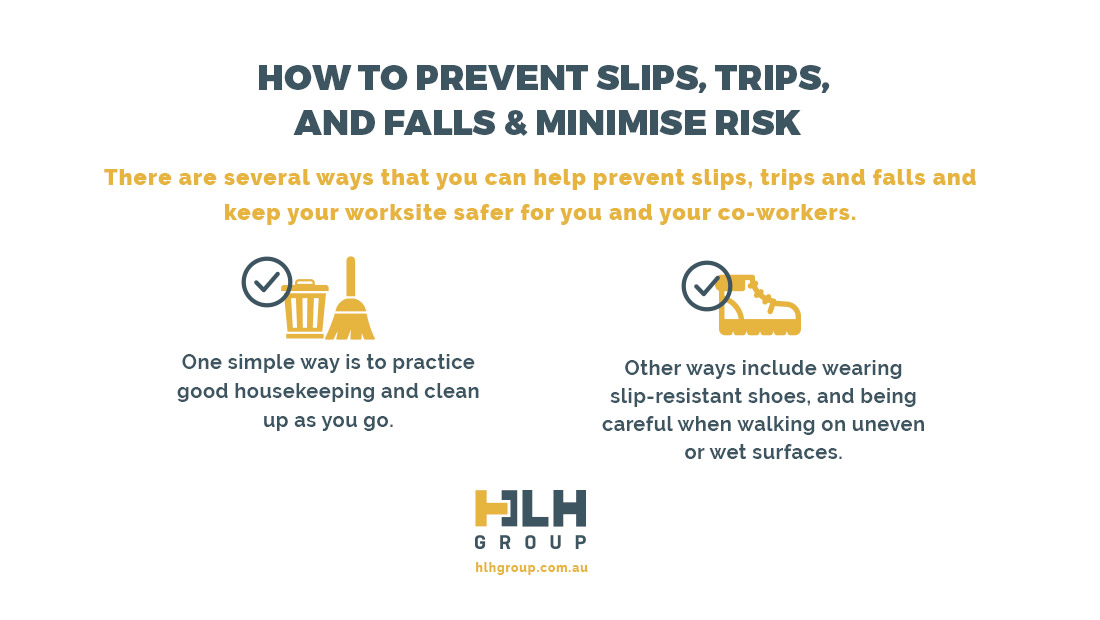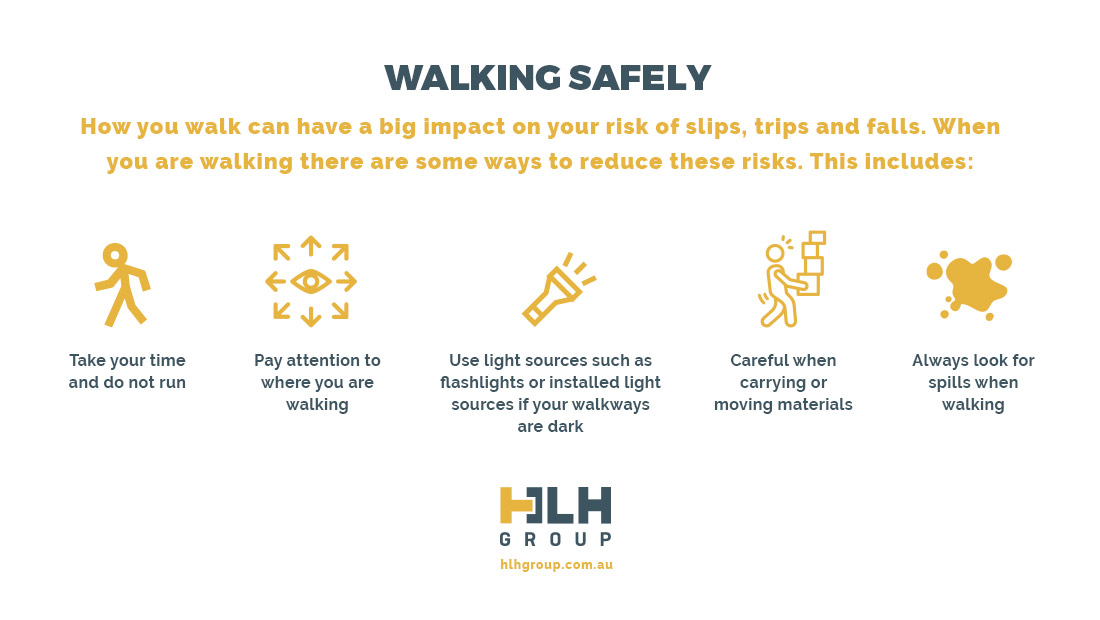
29 Sep Slips, Trips and Falls – Toolbox Talk
Slips, Trips & Falls in Construction
When undertaking construction work there is always an element of safety risk. Whether that be a low risk of using a shovel to a hazardous risk of dealing with asbestos. However, most workers seem to forget about one of the most common risks – slips, trips and falls! It is reported that nearly 15% of all accidental deaths are from incidents related to this and following on from our last toolbox talk in this post we’ll discuss slips, trips and falls. These types of accidents are extremely costly to an employer and account for almost $11 billion in costs related to them. As a worker on a construction site, there are several precautions you can take to prevent an injury from a slip, trip, or fall.
Slip, Trip & Fall Injury Statistics
Each year more than 18,500 workers in NSW suffer an injury because of a slip, trip or fall costing NSW businesses an average of 30 days lost work per injured worker and a total of over $600 million in workers’ compensation payments. In addition to workers’ compensation costs, there are financial, physical and emotional costs for injured workers and their families. A workplace injury often affects injured workers’ well-being by restricting their usual home and leisure activities.

Slip, Trip & Fall Injury Examples
Some common slip, trip, and fall injuries include:
- Broken bones
- Cuts
- Strains
- Sprains
- Back injury
- Traumatic brain injuries
Causes of Injuries
What is the common cause of these injuries?:
- Wet or oily surface
- Weather hazards include rain, snow, and ice
- Loose mats and rugs
- Walking surfaces that are not level
- Obstructed views
- Poor lighting
- Clutter
- Uncovered wires and cables
How to Prevent Slips, Trips, and Falls and Minimise Risk
There are several ways that you can help prevent slips, trips, and falls and keep your worksite safer for you and your co-workers. One simple way is to practice good housekeeping and clean up as you go. Other ways include wearing slip-resistant shoes, and being careful when walking on uneven or wet surfaces.

Good Housekeeping Tips
Good construction site housekeeping is an easy way to prevent most slips, trips and falls and it is often overlooked. Simply cleaning up your work area as you go can help on the job site. Examples of good housekeeping include:
- Cleaning up spills immediately
- Mark areas that have spills and are wet until they are cleaned and dry
- Mopping or sweeping debris from walking surfaces
- Make sure walkways are free of clutter and obstacles
- Securing mats and rugs that are not laying flat
- Covering cables and wires that cross walkways
- Making sure the work area and walkways are well lit
- Clean your area as you work don’t leave the mess for others to clean
- Check for fall hazards daily and alert your foreman if you see something
- Have a laydown yard for extra materials and keep it picked up
Walking Surfaces Tips
Slips, trips, and falls can happen on any walking surface but, if that surface is uneven or if it is made of materials that provide little traction this chance can be increased greatly. Ways you can improve your walkways on your construction site can include:
- Make sure there are mats or pressure-sensitive abrasive strips
- Ask for the flooring to be replaced or painted if you notice it creates a hazard
- Pay attention to where you are walking
- If you notice a walking surface that is uneven or that needs some work bring it to the attention of your foreman so they can correct the issue if it is something you cannot do. Also, make your co-workers aware of the hazard to decrease the risk of someone else getting hurt.
Footwear
The footwear you chose to wear to a worksite has a huge impact on if you are safe. Although everyone loves wearing the latest Nike and Adidas footwear. You should not wear tennis shoes, runners, sneakers or sandals on a worksite, always wear steal capped work boots and proper safety boots. Your work boots should be the proper fit with treads to reduce the risk of slips, trips, and falls. To reduce your risks:
- Wear work boots that fit snugly and that have slip-resistant soles
- Clean the treads of your shoes regularly
- Inspect the soles of your work boots and make sure they are intact and that you have proper treads
Walking
How you walk can have a big impact on your risk of slips, trips and falls. When you are walking there are some ways to reduce these risks. This includes:
- Take your time and do not run
- Pay attention to where you are walking
- Use light sources such as flashlights or installed light sources if your walkways are dark
- Make sure if you are carrying materials or moving materials that you can see the walkways in front of you
- Always look for spills when walking

Fall Prevention from Heights
A construction worker is more likely to get hurt by falling while pushing a wheelbarrow full of materials than they are while standing on scaffolding. However, it is still important to know how to prevent falls from heights above ground level. Some of these safety tips include:
- Always use fall protection for heights over 4 feet.
- Use proper guarding for holes and windows.
- Use guardrails when needed.
- Use adequate fall protection such as a full-body harness with a retractable lanyard that is 100% tied off to an approved anchor point.
- When climbing ladders make sure to use proper ladder safety techniques.
Do Your Part in Preventing Slips, Trips & Falls
A common safety hazard on construction job sites is slips, trips and falls but they can be prevented with some safety measures. Make sure you are always aware of your surroundings and where you are walking. Also, if you see a hazard let your co-workers and foremen know immediately. Working together to keep your worksite clean and hazard-free is the best prevention. If you have any questions about hazards on your job site or what to do, please ask your foreman. Alternatively, you can contact your HLH account manager to report a hazard.




No Comments